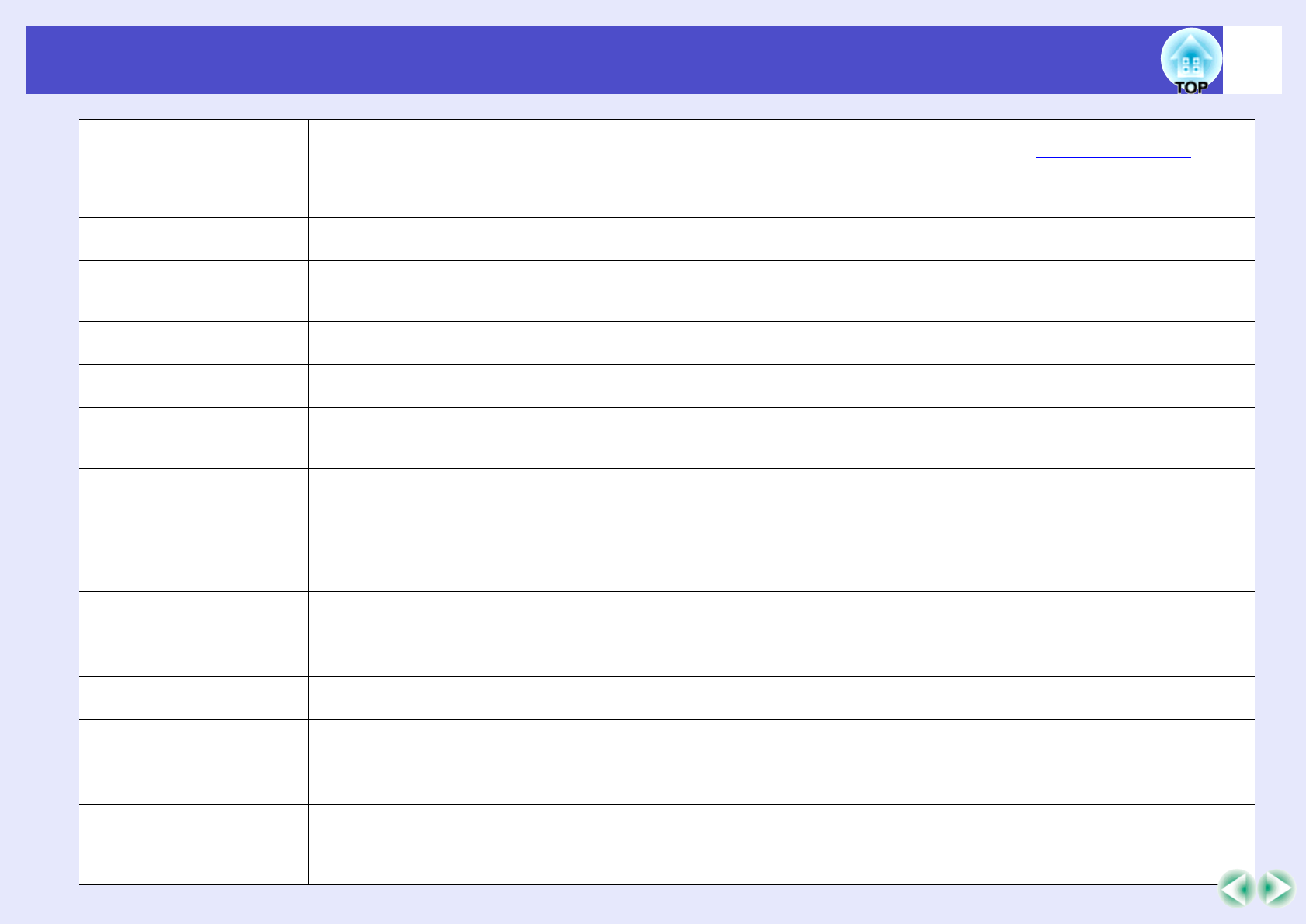
154
Glossary
User’s Guide
RADIUS server RADIUS is an abbreviation for Remote Authentication Dialin User Service. It is a protocol that is used for authenticating
transmissions for a variety of network servers including wireless LANs. A RADIUS server is an authentication serverg that
stores information such as usernames and passwords and concentrates functions such as authenticating access to wireless
LAN access points. By using a RADIUS server, access points and user information can be centrally managed without needing
to store user information separately at each access point when there are several access points on a wireless LAN.
Progressive A method of image scanning whereby the image data from a single image is scanned sequentially from top to bottom to create
a single image.
Refresh rate The light-emitting element of a display maintains the same luminosity and colour for an extremely short time. Because of this,
the image must be scanned many times per second in order to refresh the light-emitting element. The number of refresh
operations per second is called the "refresh rate", and is expressed in hertz (Hz).
Resize display This function is used to project computer images that have a resolution more than or less than the projector's panel resolution
to be projected so that they fill the whole of the projection area.
SDTV An abbreviation for Standard Definition Television. It refers to standard television systems which do not satisfy the conditions
for High-Definition Television.
Security lock A device consisting of a projector case with a hole in it that a commercially-available theft-prevention cable can be passed
through in order to secure the device to a table or pillar. This projector is compatible with the Microsaver Security System
manufactured by Kensington.
SNMP Abbreviation for Simple Network Management Protocol. In TCP/IP networks, this protocol is used for communication
between routers and other devices that are connected to the network such as computers and terminals so that these devices can
be monitored and controlled over the network.
Squeeze mode In this mode, wide-screen images in 16:9 mode are compressed in the horizontal direction so that they are stored on the
recording medium as 4:3 images.
When these images are played back by the projector in squeeze mode, they are restored to their original 16:9 format.
sRGB An international standard for colour intervals that was formulated so that colours which are reproduced by video equipment
can be handled easily by computer operating systems (OS) and the Internet.
Subnet mask A series of numbers that define the number of bits to be used for network addresses in a network (subnet) that is divided up
according to IP addresses.
SVGA A type of video signal with a resolution of 800 (horizontal)
×
600 (vertical) dots which is used by IBM PC/AT-compatible
computers.
S-Video A video signal which has the luminance component and colour component separated in order to provide better image quality.
It refers to images which consist of two independent signals: Y (luminance signal), and C (colour signal).
SXGA A type of video signal with a resolution of 1280 (horizontal)
×
1024 (vertical) dots which is used by IBM PC/AT-compatible
computers.
Sync (Synchronisation) The signals output from computers have a specific frequency. If the projector frequency does not match this frequency, the
resulting images will not be of a good quality. The process of matching the phases of these signals (the relative position of the
crests and troughs in the signal) is called "synchronisation". If the signals are not synchronized, problems such as flickering,
blurriness and horizontal interference can occur.


















